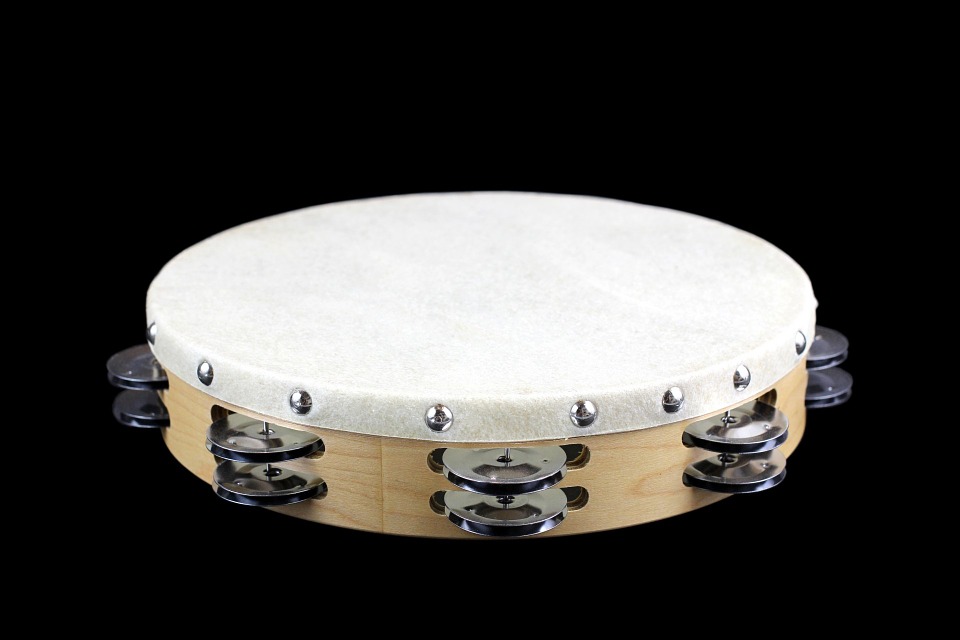I am sure you would like to know about the musical history of the tambourine first before getting to understand the mounted part.
The tambourine is a percussion instrument which is made up of a wooden or plastic frame with pairs of zils (metal jingles).
Origin
The tambourine can be traced down to Egypt and Greece, although it was not called the tambourine; the Hebrews called it tof.
Still wondering how the name came about? The tambourine is a mixture of French (tambourin) Arab (tunbur) from the Middle Persian word tambur.
The French tambourin is a long narrow drum used in Provence while the Arabian word tunbur means drum. That is the reason for the name tambourine which means an instrument with a drumhead; despite the fact that some tambourines do not have drumheads.
The tambourine has a lot of creative shapes although the popular shape is the round or circular tambourine. From gospel music to pop music, the tambourine has its part to play. We can also find the tambourine in Italian folk music, Turkish folk music, Persian music, Greek folk music, classical folk music, rock and of course samba.
How to hold the tambourine
There are two ways to hold the tambourine; you can hold it with your hands or simply mount the tambourine on a stand.
Mounted tambourine
The tambourine is mounted as part of a drum set and played using drum sticks. Most drummers mount the tambourine to the high hat stand so they can use it at any time without having to hold it.
The mounted tambourine can be used for time keeping; you can use it in conjunction as well playing from the high hat to the tambourine interchangeably. Whatever you can play with the high hat can also be done on the tambourine, but with different effects.
Some tambourines are designed to be mounted or screw to a piece of hardware and also to be played traditionally (by hands).
Getting a tambourine depends on which tambourine you want; do you want to use the tambourine with your drum set only or do you need a dual-purpose tambourine that you can play with drumsticks or hands?
Playing techniques
There different methods when it comes to playing the tambourine. There may be other techniques not mentioned here; however below are the common techniques used by everybody.
Types of techniques
- The standard strike technique
- The thumb roll technique
- The shake roll technique.
However, to skillfully play the tambourine one needs to hold the tambourine properly.
How to hold a tambourine; hold the tambourine with your non-dominant hand that is, if you are a lefty (southpaw) you should hold the tambourine with your right-hand vice versa.
Wrap your four fingers under the tambourine’s frame and then rest your thumb gently against the membrane (head) or across the top edge as the case may be, and strike the tambourine with your dominant hand.
Putting pressure on the tambourine may mute the sound, so to get the best out of your tambourine gently hold the tambourine and avoid tightening your grip.

